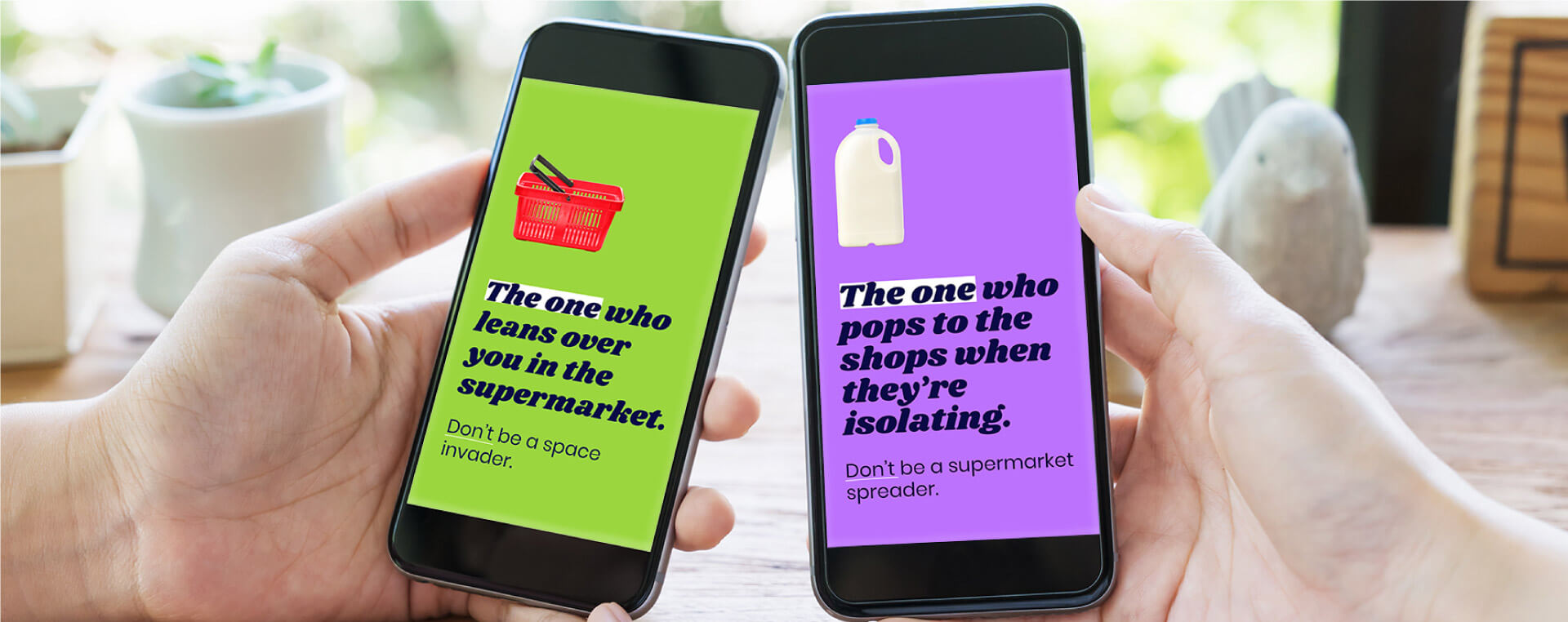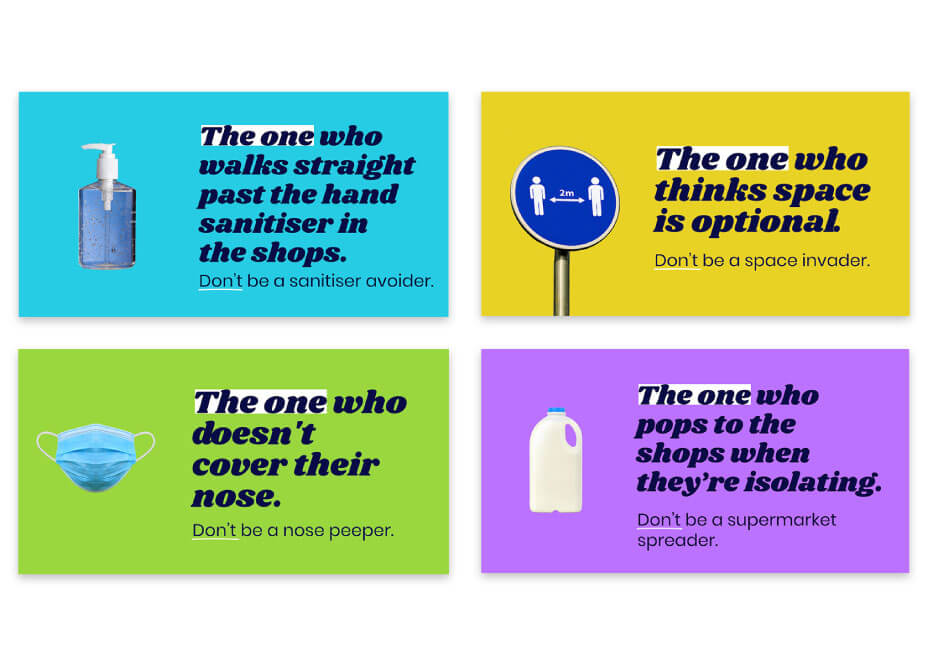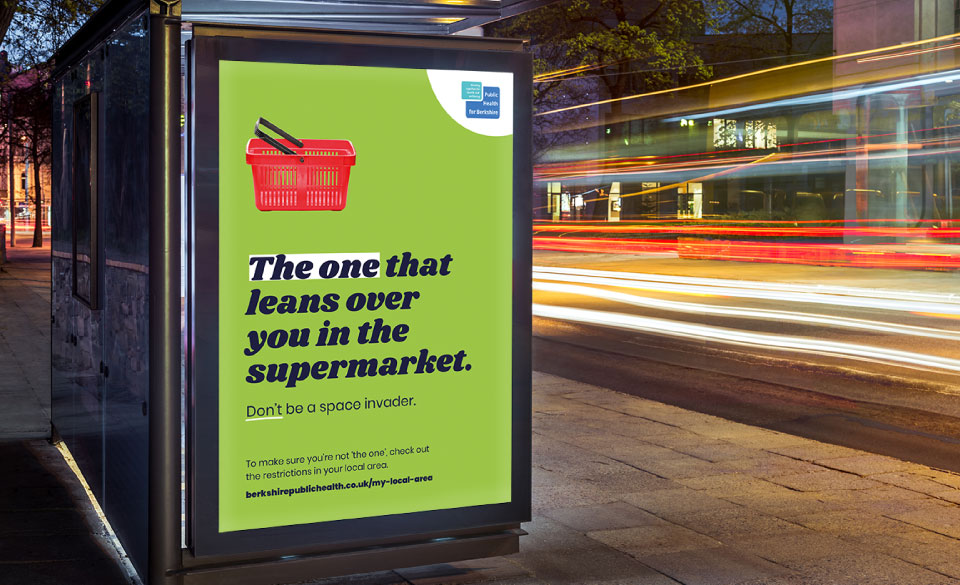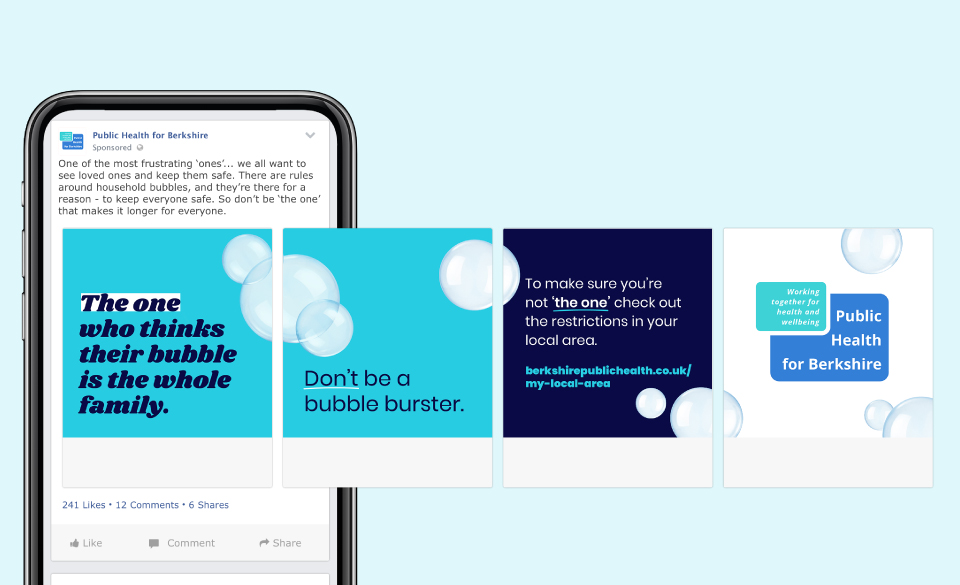
Communicating COVID clearly
It has never been more important for local authorities and their public health teams to communicate COVID effectively to help people navigate this "new normal".
More +We worked with Public Health Berkshire to conduct research into residents’ views on COVID-19 guidelines and the messages from Government. This research then led to a local campaign to help increase resident adherence to key COVID-19 guidelines.

Encouraging adherence to COVID-19 guidance. With COVID-19 cases on the rise, Public Health Berkshire asked us to conduct research with four key groups to understand the extent to which people were following, or not following, key COVID-19 guidance, why they followed or not followed instructions and how communications to encourage adherence could be improved. The insight from this research was used to develop a campaign to encourage understanding and change behaviour.

We discovered that family was a key motivator for all residents, and 'family' and 'self' largely underpinned attitudes towards COVID-19. Our research found that residents 'feel' they have a good understanding of current guidelines and they didn't feel the need to be told further, and what they needed was encouragement rather than information. Additionally, residents felt that they are/were following guidelines to the best of their ability and that it is 'other' people, not them, who aren’t/weren't following key guidance.
Four creative concepts
Using our insights and behavioural theory, we developed four initial concepts. Two of these concepts used the ‘affect’ principle and tapped into the insight that people wanted to be given hope for the future and to be encouraged to follow guidance rather than being told what to do. The remaining two concepts used the ‘ego’ principle and tapped into the insight that people felt they were appropriately following guidance and that other people needed to be told. After testing these concepts with key audiences, we found one concept to be a clear frontrunner.


Don’t be ‘The One’
Following the audience testing, we further developed the ‘The One’ concept for the final campaign creative. The campaign recognises that people know the rules and calls out those who are not following these in common situations, e.g. leaning over someone in a supermarket or not covering their nose with a mask. Not only do these relatable situations encourage conversation by those who have experienced them, but it also encourages people to think more carefully about their behaviour when in these situations, so that they avoid being ‘The One’.

It has never been more important for local authorities and their public health teams to communicate COVID effectively to help people navigate this "new normal".
More +
Alcohol consumption is changing under coronavirus and lockdown measures, for better and worse. We explore this research and review the factors influencing changes in alcohol consumption.
More +By using research and insights we created a social marketing and behaviour change campaign to encourage Derbyshire residents to look after their sexual health.
More +Enter your email address below to access the Academy and our Webinars